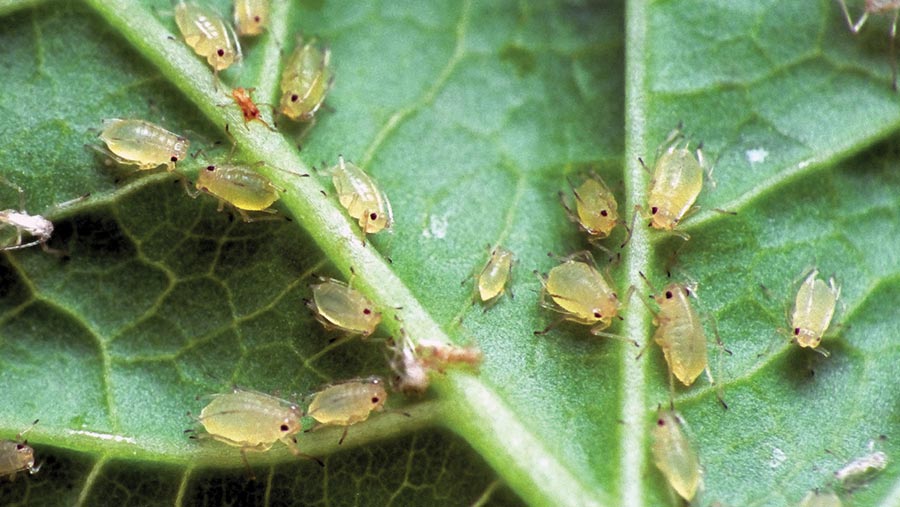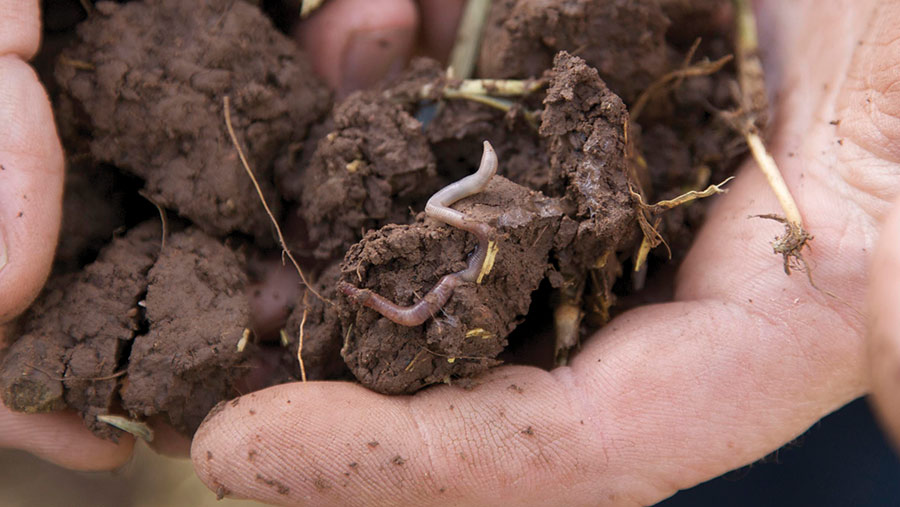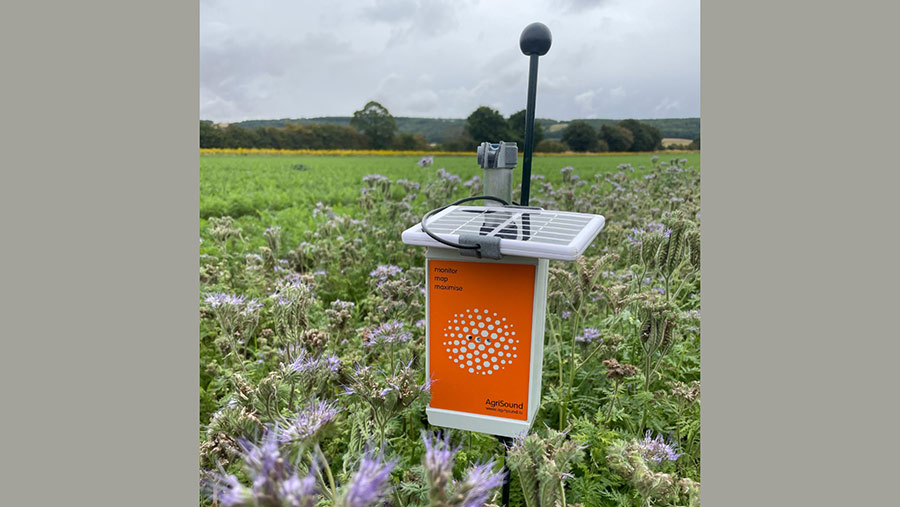How sound and smell could help improve agronomy practices
Do we make enough use of all our senses to help improve agronomy? Visual observation remains key and auto-technology identifying weeds, pests and diseases is becoming an increasingly achievable goal.
But what about technology that listens or uses the sense of smell?
See also: Video: Camera technology improves marketability for potato growers
At the recent AgriTechE Reap Conference and World AgriTech Innovation Summit, researchers and start-ups highlighted some developments that make use of those perhaps underutilised senses.
Smell-based technologies
Using the sense of smell to help protect crops isn’t a new idea – Jean-Henri Fabre, a French naturalist was one of the first to understand the importance of pheromones for insect communication in the 1870s.
However, it took nearly a century for the first pheromone monitoring traps to enter the agricultural market.
Gradual progress in the use of pheromones has followed, but the loss of approval of many insecticides and the difficulties in getting new ones registered has spurred even greater efforts to understand how to exploit insect communications.
The latest breakthrough follows some fundamental research, by Dr David Withall at Rothamsted Research. It managed to identify a key component of an insect’s olfactory system by which they detect and differentiate different smells to find mates and host plants.
“We’ve basically taken that out of an insect and, working with a commercial partner, put it on a handheld sensor,” he explains. The result is a sensor that can detect individual pheromones from individual pests in real-time.
“It’s effectively a smoke alarm that can tell growers what pests they have in a field, when they arrive, and how big the infestation is. With further development, it should be possible to use it to map a field to allow growers to make informed decisions.”

Sensors are being developed that can detect pests, such as the peach potato aphid, through their pheromones © Blackthorn Arable
Initial laboratory tests have been able to detect an individual aphid up to 1m away, and field tests are now under way to test efficacy in the field.
“We envisage in the future a pick-and-play approach, where growers decide they have a threat from pests A, B, C and D, and use a sensor that is customised for those pests,” says David.
PES Technologies is also using smell for its soil health test. Its device, which is set to be launched commercially in 2024, detects the aroma created by microbes living in the soil.
Just a teaspoon of soil is required for a test, explains Dr Jim Bailey, chief technology officer and co-founder of PES Technologies. “It’s about the same amount as labs take out of the kilogramme of soil you send to them.”
The soil aroma is translated by PES’s technology into an electrical fingerprint. This is analysed by a machine learning algorithm that has been trained using soils of various types from across the UK to provide soil quality indicators for the specific soil sample.
“We’ve trained it to measure microbial biomass, soil organic matter, water holding capacity, pH and nitrates,” Jim says. “We’re also working on sequestered soil carbon, microbial diversity and fungal-to-bacterial ratio.”
Each device contains 100 tests, with one test creating one fingerprint.
“Just like our nose, the digital nose will get used to a smell over time, so you need a new one each time. The whole process, from loading the soil sample to receiving results to your phone, takes a little over five minutes. There is no need to transport samples back to a lab.”
Jim suggests the data could be used to inform and target precision fertiliser use or seed rates, as well as providing a consistent measurement of soil health over time.
Sound-based technologies
A different way of measuring soil health is being developed by soil scientist Dr Jacqueline Stroud at Warwick University.
As part of a £250,000 feasibility project under Defra’s Farming Innovation Programme, the university – along with Baker Consultants – is testing whether listening to soils can be used to monitor soil health.
In pilot studies, researchers have found that it is possible to record the acoustic signatures of organisms within the soil, which could be used for monitoring, for example, earthworm abundance and activity.
“Evidence collected so far suggests that a noisy soil is a healthy soil,” says Jacqueline.

© Tim Scrivener
The project is developing a soil probe to record the noises and then compare them to detailed library of acoustic signatures from earthworms and other macroinvertebrates recorded in controlled experiments.
“Earthworms make a raspy and a rhythmic scrunching noise as they move through the soil,” Jacqueline explains. “But we’re not just capturing the noises of earthworms, but of the whole ecosystem.”
The aim is to develop a rapid and inexpensive method to assess soil health over time, which potentially could be used to monitor habitat enhancement and restoration projects, including biodiversity net gain.

Agrisound in-field sensor © Agrisound
Above ground sound, especially of bees and other pollinator, is the target for AgriSound’s in-field sensor, Polly.
Measuring and monitoring pollinators currently relies primarily on researchers going into fields with clipboards and doing manual surveys, says AgriSound founder and chief executive Casey Woodward.
“This needs to change, so we’ve developed what we call the “Amazon Alexa for bees”. Polly can be installed in any outside environment to quantify and track the number of pollinators in any given area, 365 days a year.”
Thousands of hours of annotated sound files of pollinators have been used to develop machine learning algorithms, which can take complex sound information and give usable insights.
“This real-time management information can help drive better management decisions and improve the quality of land assets,” he suggests.
With each device costing about £200, plus a small data subscription fee, it is aimed at increasing yields of high-value pollinated crops through improved pollination rates and better understanding of pollinator behaviour.
It can also be used by supply chains to provide monitoring data to demonstrate biodiversity improvements and overall environmental impact, Casey says.
Real-time nitrate sensors to help inform nutrient management
Sensor technology developed by PlentySense, a spinout from the John Innes Centre in Norwich, is aiming to help growers fine-tune fertiliser applications in season.
Wasted nitrogen, typically about 50% of what is applied, is a huge cost to both grower and to the environment, explains Prof Tony Miller, chief scientific officer at PlentySense.
The sensors developed by his company were initially developed to support a research project investigating the impact of wheat root architecture on soil health and nitrogen use efficiency, he says.
“We found it difficult to gain real-time measurements of nitrate in soil, so we designed the sensors to provide accurate information.”
After initial studies in soil columns, the company has been trialling the sensors in field trials of wheat, potatoes and onions with Agrii and others. The sensors measure nitrate levels at three depths – 10cm, 20cm and 40cm.
“By reviewing real-time use of nitrates under a growing crop, combined with environmental measurements such as soil moisture, we gain valuable information that can be used by farmers and agronomists for deciding how much nitrogen to apply.
“For example, this year we could see in some of our trials that a second application wasn’t needed because there was plenty of nitrogen in the soil.”
While nitrate has been the initial focus, Tony says they aim to develop sensors to quantify ammonium, phosphate and potassium.
Dr David Withall, Dr Jim Bailey, Dr Jacqueline Stroud and Prof Tony Miller presented at AgriTechE’s Reap Conference, and Casey Woodward spoke at the World AgriTech Innovation Summit in London

